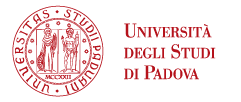Comparative Cytoarchitecture of the Brain in Terrestrial and Marine Mammals, Using Deep Learning Algorithms: Unveiling Brain Structure CALL 2025/2026
Current neuroanatomical research is rapidly advancing with the integration of cutting-edge computer vision and deep learning algorithms. This approach will shed light on how brain structures contribute to specific behaviors and capabilities, providing a better understanding of the mammalian brain. The findings will not only advance our knowledge of neuroanatomy but also have significant implications for veterinary medicine, conservation efforts, and the broader field of comparative biology.
The diversity of mammalian species, ranging from terrestrial mammals like horses, cats, and sheep, to wild species such as tigers, rhinoceroses, and giraffes, as well as marine mammals like dolphins, Risso’s dolphins, and Cuvier’s beaked whales, offer invaluable insights into the evolution and specialization of mammalian neural circuits, emphasizing the crucial role of diversity in advancing neuroanatomical research.
By focusing on these often-overlooked species, the successful applicant will seize the rare opportunities they offer for structure-function comparisons. They will harvest, prepare, and analyze key brain areas across various mammalian species, including the somatomotor cortex, cerebellum, and hippocampus, and leverage custom deep learning algorithms to conduct comparative analyses. These analyses will map quantitative cytoarchitecture data to different functional mammalian circuits.
Five publications related to the Research Topic for the candidate interview:
- Amunts, K., Schleicher, A., Zilles, K.: Cytoarchitecture of the cerebral cortex—more than localization. NeuroImage 37(4), 1061–1065 (2007)
- Song, A.H., Jaume, G., Williamson, D.F., Lu, M.Y., Vaidya, A., Miller, T.R., Mahmood, F.: Artificial intelligence for digital and computational pathology. Nature Reviews Bioengineering 1(12), 930–949 (2023)
- Brenowitz, E. A., & Zakon, H. H. (2015). Emerging from the bottleneck: benefits of the comparative approach to modern neuroscience. Trends in neurosciences, 38(5), 273-278.
- Bolker, J. (2012). Model organisms: There’s more to life than rats and flies. Nature, 491(7422), 31–33. https://doi.org/10.1038/491031a
- Pluchot, C., Adriaensen, H., Parias, C., Dubreuil, D., Arnould, C., Chaillou, E., & Love, S. A. (2024). Sheep (Ovis aries) training protocol for voluntary awake and unrestrained structural brain MRI acquisitions. Behavior Research Methods, 56(7), 7761-7773.
- Glickstein, M., & Voogd, J. (2010). Cerebellum: Evolution and comparative anatomy. Encyclopedia of Neuroscience, 743–756. https://doi.org/10.1016/B978-008045046-9.00947-5
Tutor: Prof. Jean-Marie Graic
mail: jeanmarie.graic@unipd.it






